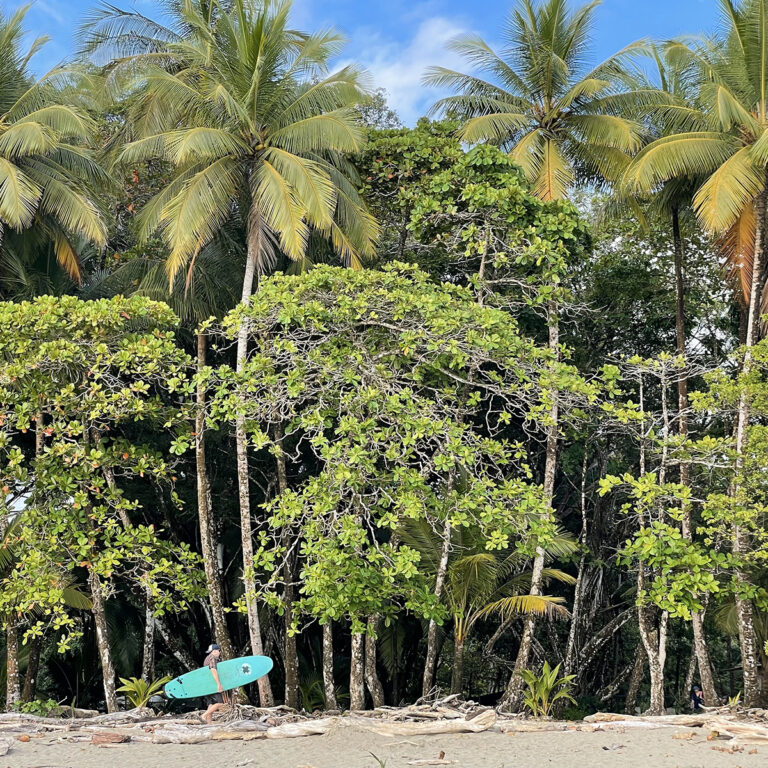As the land becomes anew with the emergence of greenery, the landscape awakens from its long winter’s dormancy. In the days of old (before grocery stores), it was the time of renewing our bodies with vitamins and minerals from the forest. Spring offers us detoxifying, bitter plants, full of much-needed nutrients as the fats and proteins that kept us warm in the winter time give way to a much leaner existence.
Have you ever wondered what you can eat in the forest? In the Inland Northwest, we are lucky, for we do not have very many poisonous plants. But you wouldn’t want to go foraging without knowing these sometimes-deadly ones. It is this lack of knowledge that causes many to stay ignorant and go to the store. However, If you were to look out at the landscape, about 95 percent of the plants you see are either edible or medicinal. Some plants are delightful to eat, such as miner’s lettuce, morel mushrooms, and fiddleheads. I like to classify wild foods on a continuum from yummy, palatable, survival, yucky, and deadly. Learn about poisonous plants first. When you know these plants well, then the rest is a grand experiment for the taste buds.
Some plants are utilitarian, meaning that they can be used for other things such as making cordage, weaving baskets, or creating arrows for your bow. These plants are long-forgotten in modern times. My favorite plant that is prolific during this time of year is Urtica Dioica, more commonly known as stinging nettle. It is edible, medicinal, and utilitarian.
Stinging nettle is associated with being obnoxious and one to avoid because of its nasty sting when you touch it. I remember when my great grandmother tripped and fell into a large patch of stinging nettle. She was a screaming mess! I may have learned my first swear words that day. She told me that using the juice of a fern can be used to soothe the infliction. Typically, that is the case in nature; the antidote for a toxic plant is usually growing nearby. Nature in perfect balance as the creator intended.
Stinging nettle is our local superfood. It is very high in vitamins and minerals, such as calcium, iron, magnesium, vitamins A & D, sodium, potassium, and phosphorus. It has the highest amount of protein of all the plants. Nettles with purple stalks signify that there’s a high amount of magnesium in that particular plant.
Every part of the plant has a different purpose. The leaves are good for eating like spinach or can be dried for later use to be sprinkled on food or make a tea infusion. The oil made of dried nettle seeds can be mixed with rosemary or lavender oil and rubbed into your scalp to stimulate hair growth. Soak in a bath of nettle root tea for rheumatic pains and joint stiffness. Stinging nettle is your friend.
As a medicine, stinging nettle is a tonic, pectoral, astringent, and mild diuretic. It becomes a synergistic decongestant when mixed with other herbs, such as yerba santa, yerba mansa, goldenseal, and California bayberry. It’s great for expelling mucus from the lungs and sweeping out toxins from your lymph nodes.
And then, there are the flowers. Have you ever looked up close to the flowers of stinging nettle? The first part of the plant’s Latin name, Urtica, means ‘to burn’. (That connection is obvious.) The second part, Dioica, means ‘of two houses,’ which signifies that this species has both female and male representation in separate clusters on the same plant. How they procreate is a beautiful love story that I’ll share sometime around the campfire.
The energetic essence of the female flower is nature’s estrogen that heals at an emotional level. It helps you to be receptive and nurturing. The male flower essence is nature’s testosterone, helping you with procrastination and getting things done. We all need a little of both in our lives to maintain a healthy internal balance.
The stalks of stinging nettle also make wonderful cordage. You can strip the fibrous strands from the outside of the stem. The fibers are twisted into cordage, or rope. For a nettle enthusiast, fibers can be carded and spun into yarn like wool. Nettles have been used for ages to make fine clothing. (And, no — the shirts do not sting.) I hope to someday make an article of clothing out of stinging nettle fiber.
The key to survival and a better diet is knowing the landscape and unlocking the wisdom of the plants. Come join me for foraging fun at my Wild Edible & Medicinal Foraging class on June 10, 17, and 24. //
Karie Lee Knoke is a wilderness/primitive skills instructor and founder of Sacred Cedars Wilderness School. She was a contestant on the reality survival TV show “Alone,.” Season 9, on the History Channel. Go to Karieleeknoke.com for more information, or follow her on Facebook @SacredCedarsWildernessSchool or Instagram @karie_lee_knoke












